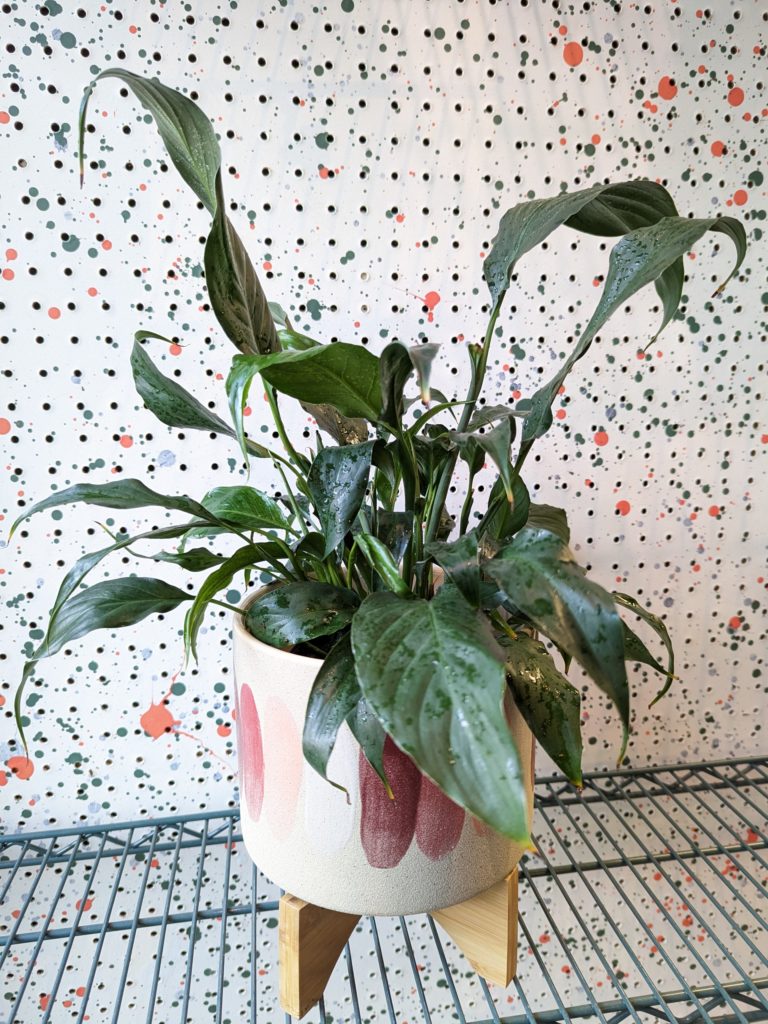How to Keep Your Houseplants Alive This Winter
Florist, designer, and houseplant aficionado John Sundling shares his top tips for thriving vegetation amidst the cold and snow.

Keeping houseplants alive in the spring and summer is relatively easy if they get ample light and water. The winter, however, is an entirely different story—especially here in the Pine Tree State, where it gets dark at 3 p.m. and the seasonal chill sticks around longer than anyone would like. To learn how to best take care of our plant friends throughout the winter, we sat down with florist and designer John Sundling, founder and owner of Plant Office, a houseplant and dried goods store in Portland’s bustling East End.
After answering a florist’s help wanted ad in 2011, Sundling decided to combine his passion for floristry and design with his love of houseplants and his keen retail instincts. Today, he’s an active member of Portland’s thriving food and hospitality industry, designing floral arrangements for weddings, shops, and restaurants, in addition to overseeing Plant Office’s operations. Here are his top tips for caring for your houseplants during Maine’s long-lasting winter season.
Extra light is key
As a Mainer, you’ve experienced firsthand how early in the day the winter darkness descends. That’s why Sundling recommends extra light to keep your houseplants thriving, even if you’re just using simple fluorescent bulbs. Make your life easier by purchasing an automatic timer that controls the light, “so you don’t have to remember to turn the lights on and off every day.”
Humidity is your friend
Ever notice how dry your skin gets in winter? The same goes for houseplants. “Most indoor plants are from the tropics and need humidity year-round to thrive,” says Sundling, but “our homes in Maine dry out this time of year.” To ramp up humidity, try grouping your plants together in one area, spritz them with water once a day using a spray bottle, or place a small humidifier near plants that need extra moisture.



Stay vigilant for pests
“Pests can be more of a problem in the winter because plants have fewer resources to fend off attacks,” Sundling notes. Keeping an eye on your plants and sticking with a regular cleaning and pruning routine will help keep pests at bay. If you discover a common pest like spider mites, mealybugs, or aphids, be sure to “take care of it as soon as possible so it doesn’t get worse.” Begin by isolating the plant so the infestation doesn’t spread, then blast it with water to dislodge any insects. Spray it down with insecticidal soap to kill any pests that are left or dip a Q-tip in rubbing alcohol and remove stragglers one by one.
Avoid cold windows and doors
“Drafts are the enemy this time of year,” and can lead to root rot, “especially if a plant has recently been watered,” says Sundling. For that reason, consider moving your plants away from cold windows and doors that are frequently opened. The good news? In the winter, the sun remains lower in the sky, so light reaches further into your home. “That means your plants don’t have to be right in the window to get good light,” Sundling adds.

Beat the heat
Keep in mind that radiators and heating vents aren’t great for plants, either. “No plant wants to be baked to death,” jokes Sundling. Since radiators are often located near windows, it’s easy to avoid both the hot and the cold by placing your plants further into the room during the winter—just be sure to avoid smaller space heaters, too.
Don’t sweat vacation
Odds are you might be traveling at some point during the winter. Sundling suggests giving your plants a thorough watering before you leave but insists they should be fine while you’re gone. Plan to travel for more than seven to ten days? “You might want a friend to stop by and check on your plant buddies,” he says.
The Best Houseplants for Beginners
- Peace Lily: “They have a built-in ‘I need water’ warning system. When you see them start to droop, give them a nice soak. They should be back by the next day.”
- Silver Pothos: “This lower light plant is easy to care for, with just enough personality to save it from being boring.”
- Hoya: “It’s a succulent-like vining plant that doesn’t need a ton of light. After a few years of maturing, they flower pretty reliably, which is a nice bonus.”
Lastly, we asked Sundling which houseplants tend to thrive in Maine—and you’ll never believe his response. “Plants like cacti and citrus do surprisingly well in Maine if you have enough light,” he said. “They don’t mind the cold, and unlike more tropical plants, they can live long with good care. I especially love when my lemon tree blossoms in my house in the winter,” he added.
Read More:
- Designed to Flow

- Maple Madness

- How to Keep Your Houseplants Alive This Winter

- The Best Ski Gear From Maine

- A Historic West End Brownstone Gets a Classic Renovation


